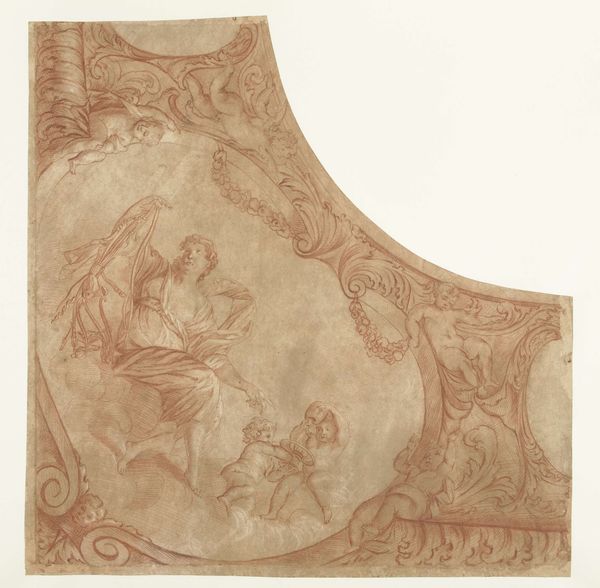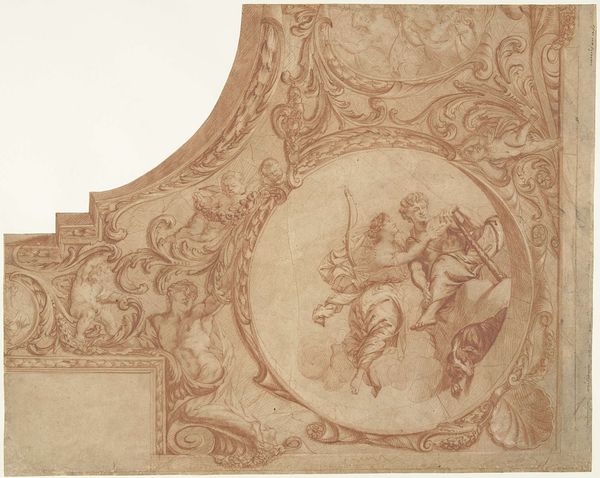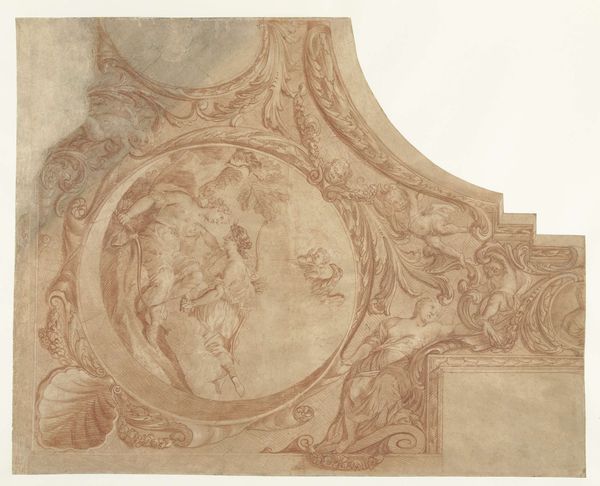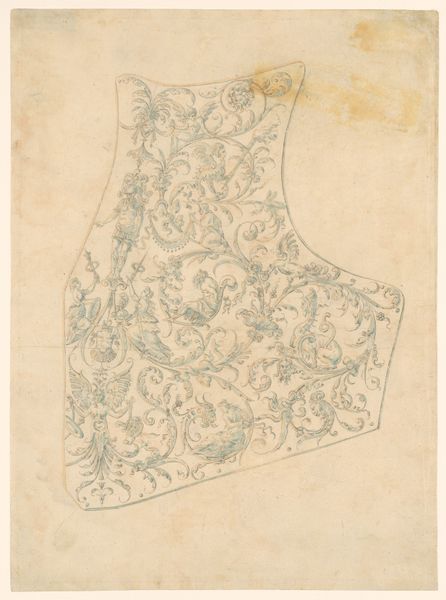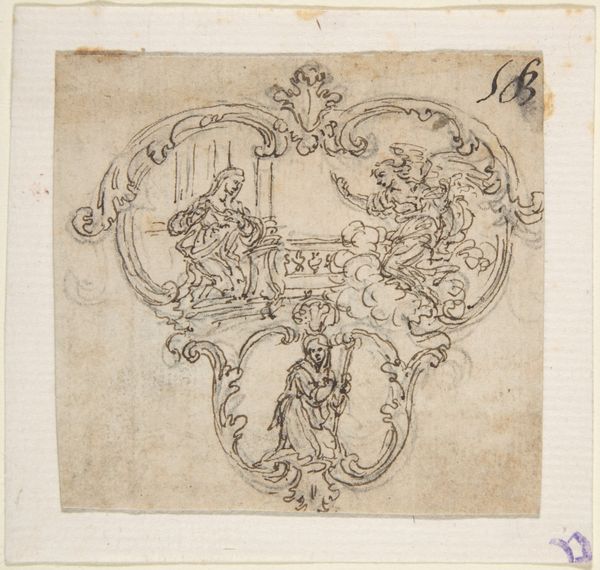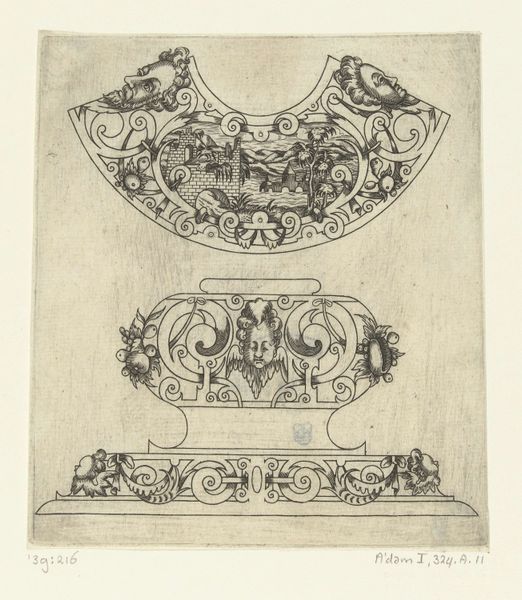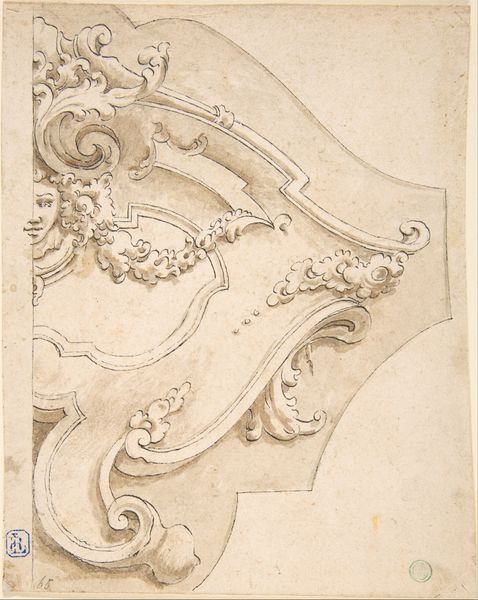
Ontwerp voor een hoekstuk van plafond met personificatie van de Gerechtigheid 1680 - 1757
0:00
0:00
drawing, pencil
#
drawing
#
allegory
#
baroque
#
etching
#
charcoal drawing
#
pencil drawing
#
pencil
#
history-painting
Dimensions: height 472 mm, width 471 mm
Copyright: Rijks Museum: Open Domain
Curator: Here we have Mattheus Terwesten's "Design for a corner piece of ceiling with personification of Justice," dating from 1680 to 1757. Editor: It gives off a breezy feeling; cherubs swirling with Justice across what seems like a heavenly realm, captured in warm reddish-brown hues. It's a bit ornate, perhaps? Curator: Terwesten, a significant figure in the Hague's art scene, clearly drew on Baroque conventions here. We must contextualize it within the prevailing power structures and aesthetic tastes of the time. This design offers insight into the role of art in legitimizing authority through allegorical representation. Editor: Justice, always a fraught concept. Notice how she's accompanied by these chubby figures. Are they instruments, perhaps accomplices in administering or interpreting law? There's also the decorative element, these lush ornamental borders...they almost seem to suffocate Justice! Does this framing itself make a statement? Curator: The materiality informs that. The drawing, executed in pencil, suggests it was meant to be a draft for a grander, more permanent work, a ceiling perhaps, likely commissioned by some important member of the community. The placement high above would, through its very positioning, reinforce ideas about legal ideals emanating from above. Editor: But even drafts are loaded with intention, revealing certain artistic choices at the foundation of such visual messaging. Are those artistic choices about aspiration, justification, social hierarchy? What is deemed worth enshrining on a ceiling? Curator: That it’s only a fragment – a design for a corner - encourages considering its place in a broader artistic and political system. Who commissioned it? How was the finished work received? And did that reception conform to the original ideological intentions embedded within its production? Editor: Considering the work's perspective allows exploration into power dynamics between patron, artist and, ultimately, those gazing upon it. These images of authority – they always imply complex ideas regarding control. The visual assertion alone holds enormous sway! Curator: Indeed, from the Rijksmuseum collection, this small-scale artwork speaks to macro-level operations. It reminds us of how art both reflects and perpetuates societal hierarchies. Editor: Which is where these older artworks can stimulate thinking today around questions about accountability. Terwesten’s concept forces one to consider that Justice, especially, requires persistent assessment.
Comments
No comments
Be the first to comment and join the conversation on the ultimate creative platform.
